
I’ll be streaming live weekly on Twitch. Come join us every Sunday at 12:00 Pacific. See you there! https://twitch.tv/acill


I’ll be streaming live weekly on Twitch. Come join us every Sunday at 12:00 Pacific. See you there! https://twitch.tv/acill
Some of you may have noticed I have been posting work progress and streaming a little bit again. Yes, I have started taking work again on a case by case basis. Mostly I am doing rebuilds of dead 4000 machines onto a new board.
The A4000 for now is my primary focus. You send in an A4000 dead or alive for a rebuild onto a new board, you get a 90% new board back. I will take the 23 pin ports and custom chips off is all. The rest is 100% new.
The cost for this service is $800 US.
Here is the most recent build progress completed February 12th, 2024 as an example.











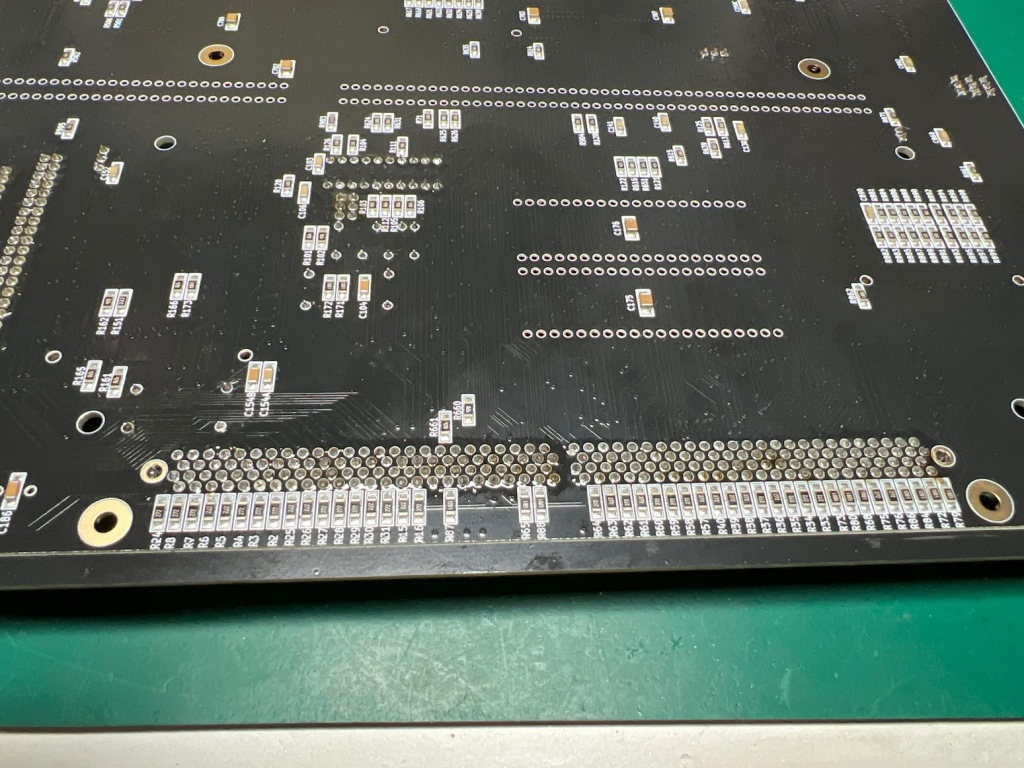



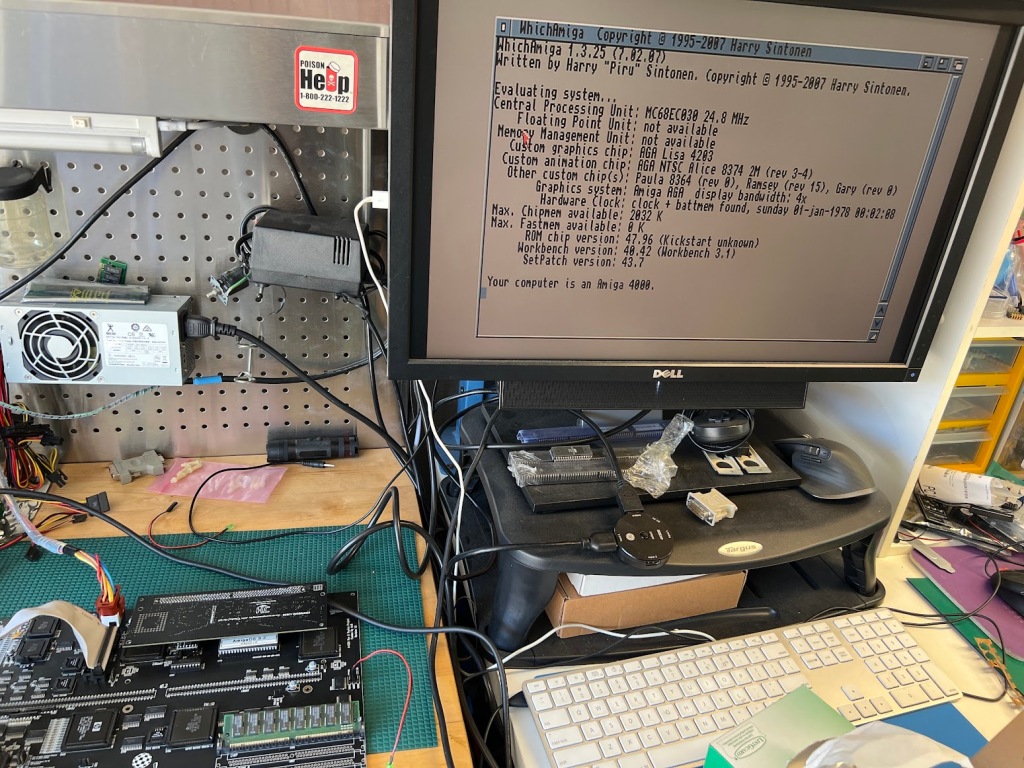

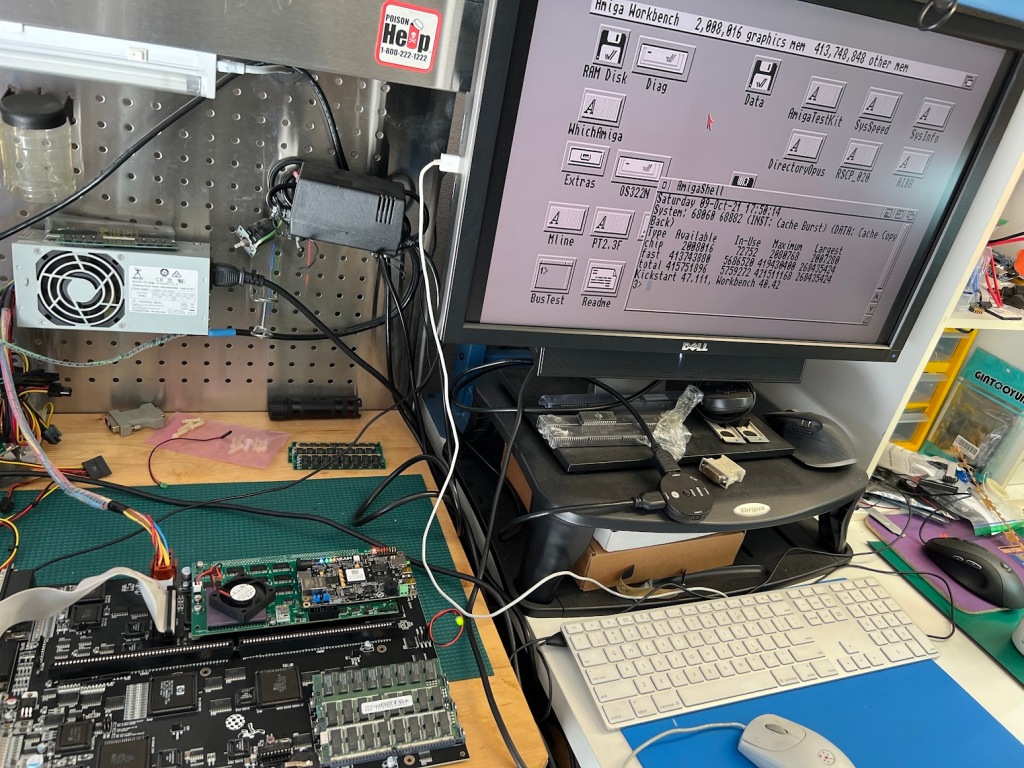
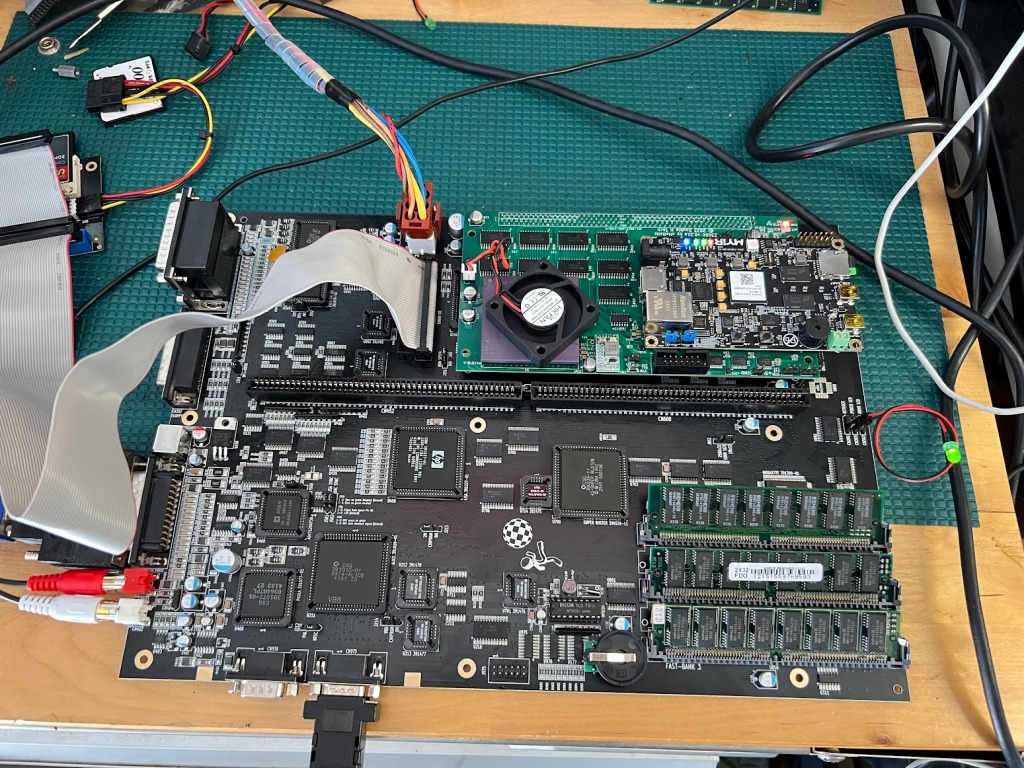



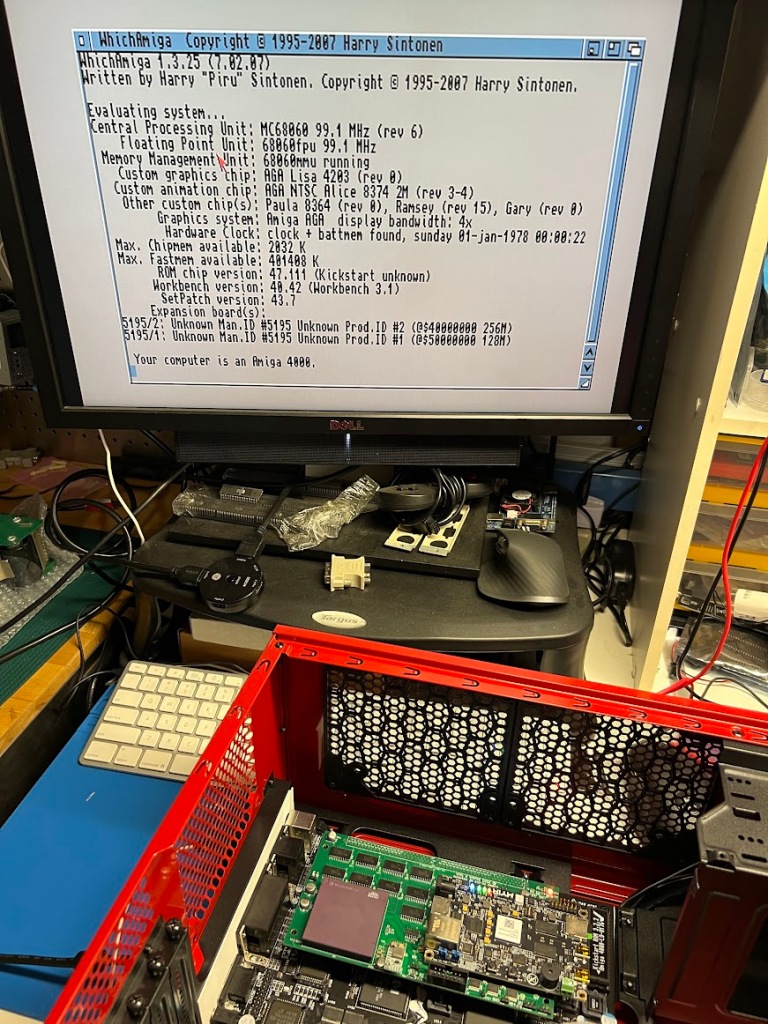
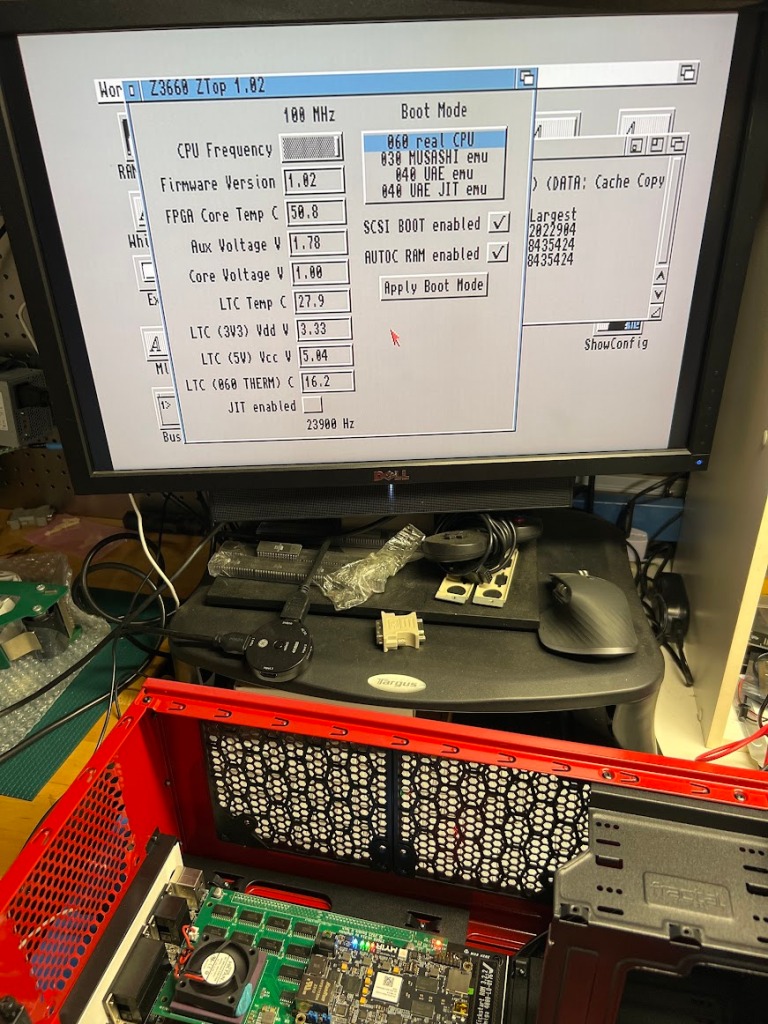
What is this? Its an WIP accelerator based on the 3660 design Chuck (John Hertel) did with a catch. Below is taken from the GitHub page. For more information visit this Discord and the Github links below. So far its running absolutely amazing.
Z3660 is an Amiga 4000 CPU accelerator board based on A3660 and Z-turn FPGA board.
Compared to A3660, Z3660 has some key differences:
1. Z3660 accelerator board can only use 060 CPUs. This could be changed in the future, but at this time, only 060 is supported.
2. If Z-turn FPGA board is NOT used, then you get a simple A3660. The only difference is that all A3660 PLDs are replaced by a XC95144XL-10TQ144 CPLD. It could be possible to use 060 up to 100MHz, but only 50 MHz and 64 MHz has been tested. A board with 128 MB of CPU RAM is in the works (to be connected at Z-turn sockets).
3. If you use a Z-turn FPGA board, then you can add 128 MB of CPU RAM (DMA compatible), 256 MB of Z3 RAM (not DMA compatible), RTG 16bit, Ethernet, AHI and MHI. Also there is a SD to SCSI emulation for using raw RDB disk images (USB storage maybe in the future). And of course, you can use a 68060 rev6 at 100 MHz.
Main branch. Z3660 with Z-turn FPGA
This main branch has everything you need to build a Z3660 with Z-turn FPGA.
If you want to build Z3660 without Z-turn FPGA, please go to wo_FPGA branch. The board is the same, but the CPLD firmware and BOM are obviously different.
Current version of Schematics is v021. It has all fixes needed by v02 to have DMA compatibility (tested with ReA4091 as bus master), so you can build it.
The exact model of Z-Turn board you will need is: MYS-7Z020-V2 ( mouser https://www.mouser.com/c/?q=MYS-7Z020-V2-0E1D-766-C-S ).

v0.2 Z3660 without FPGA

v0.2 Z3660 with FPGA
In this version you can see that I have used a 3V3 DCDC converter, instead of old linear regulator on VR1. Board has both footprints in one. Please be careful with its connection.
Note on RTG status: RTG is full working now. It has all features that ZZ9000 has (except obviously scandoubler). Due limitations of Z-turn, output video is limited to 16 bit.
Manufacturer ID was assigned to 5195 decimal, 0x144B hexadecimal (thanks to Olaf Barthel).
All RTG, AHI and MHI are based on ZZ9000 RTG (https://source.mnt.re/explore). It has the same band-pass filters as the AX module, but made in software by one of the ARMs.
And finally, a checkmate move…
Don’t have a 060 rev6 CPU, and still want to try Z3660 with a Z-turn?
sHaNsHe to the rescue!!! 😛
One of the Z-turn ARM CPU can run the emulation code of a 68040 CPU with JIT that reaches up to 120 MIPS!!!
It is based on Amiberry CPU code (for 32bit ARM). (And yes, I know, but Emu68 no longer supports 32 bit ARM).
You can even switch between the real 060 CPU and the emulation by clicking on an app (and rebooting).
Discord channel link:


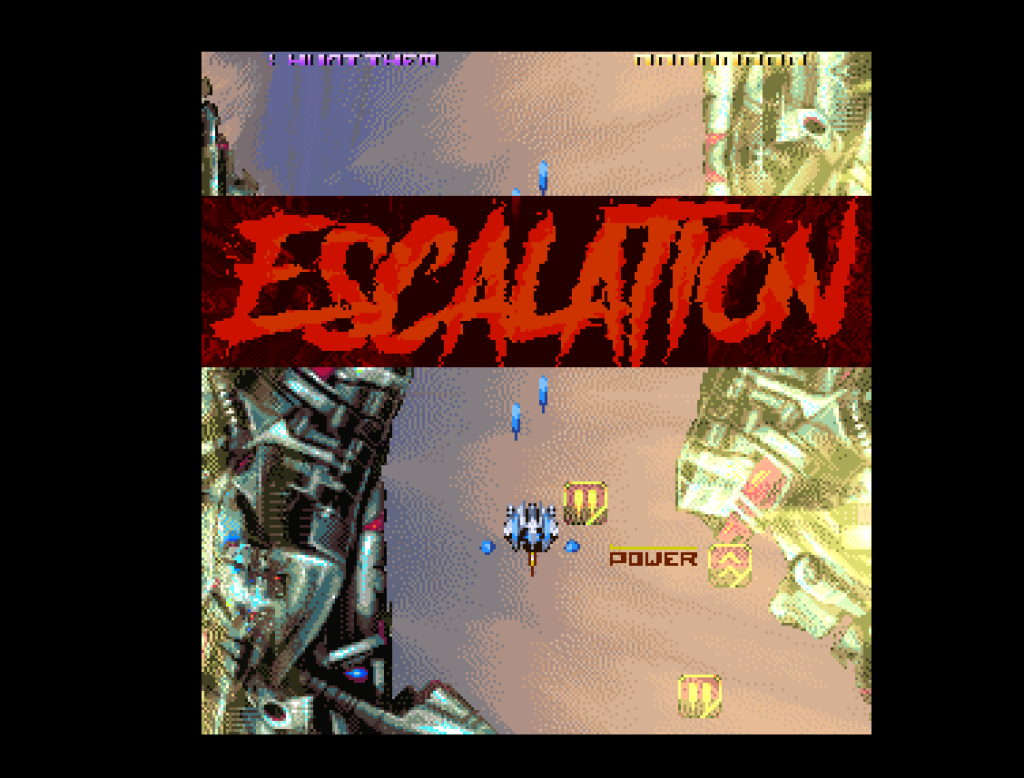



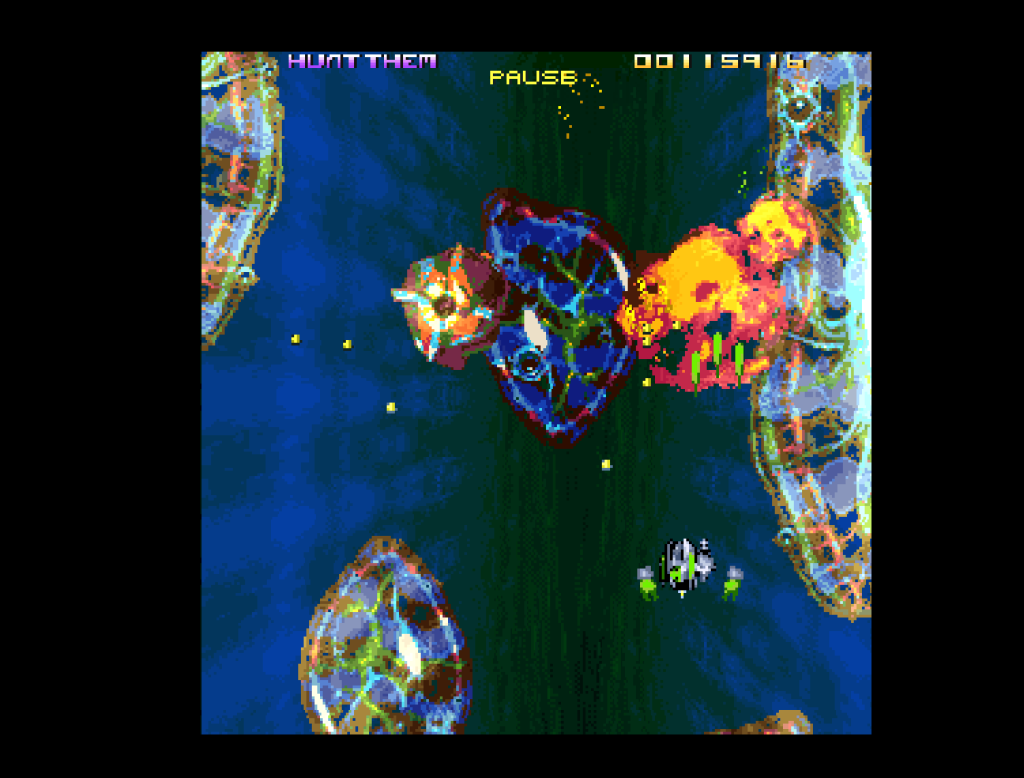
Purchase HERE: Reshoot Proxima 3 Download-Version
Reshoot Proxima 3 is available in the following variants:
Signature Edition (Soundtrack + Game CD)
Signature Edition (Soundtrack + Game CD) plus USB
Pure Edition (Game CD)
Digital Edition (HD installation archive download)
Soundtrack (Audio CD)
Poster A1
About Reshoot Proxima 3
Prepare for a pixel-powered thrill ride like no other!
Dive into the heart of classic gaming nostalgia with our top-down retro pixel art shooter for classic Commodore Amiga-platforms.
Traverse 5 breathtaking stages, from the fiery Sun to the eerie depths of Hell.
Brace yourself for lightning-fast, vertical-scrolling mayhem that will test your reflexes and courage.
“Reshoot Proxima 3” is the ultimate challenge for those seeking a technically astounding adrenaline rush.
Immerse yourself in a stunning mix of gameplay flow, pixel art and music.
Face unrelenting foes, and prove your mettle in this tough-as-nails shoot ’em up.
Are you ready to rewrite the cosmos and conquer the skies?
Features:
* Custom-made for Amiga AGA-hardware
* Fluid gameflow experience
* 5 uniquely themed stages
* adaptive attack wave design
* makes full use of AGA-chipset
* 24 bit color pixel art
* Steady 50 fps framerate
* 2 difficulty settings
* Energizing music and sound-fx
* Entire code in Assembly-language
* Local and global highscore table
* Available on CD-ROM boxed, USB and digital
* Exclusive for Commodore Amiga A1200, A4000 and CD32
* Compatible with most Amiga-emulation systems, MISTer, A500 Mini, PPC
Check out this great review from 10 Minute Amiga Retro Cast!
Breaking News: A1222+ production underway through a 3-way agreement with ACube Systems, AAA Technology and A-EON Technology
Cardiff: 29/06/2023
In an exciting collaboration of Amiga technology companies, ACube Systems, AAA Technology and A-EON Technology have come together to announce the production version of the long awaited A1222+ computer.
This joint effort brings a new era of collaborative computing for Amiga enthusiasts by leveraging the expertise and resources of the three companies. The A1222+ is custom designed to run AmigaOS 4.x and also supports compatible Linux PowerPC operating systems as well as AmigaOS 3.x under emulation.
The motherboard’s compact and robust design is powered by NXP’s QorIQ P1022 dual-core PowerPC processor running at 1.2 GHz. It is supplied with version 2.3 of A-EON’s Enhancer software package which includes advanced video and graphics drivers and a whole host of updated applications, utilities and datatypes. ACube Systems have already successfully produced updated A1222+ v1.3 prototypes and will manage the new motherboard production and testing while AAA Technology will act as the main distributor for the new Amiga machine.
Enrico Vidale, Matthew Leaman and Laurent Zorawski, the CEOs of the three companies expressed their enthusiasm for this collaboration. They jointly stated,
“We are excited to announce our partnership and the beginning of A1222+ production. By combining our strengths and expertise, we aim to deliver an enhanced computing experience for Next-Generation Amiga enthusiasts. This collaboration marks a significant achievement for future hardware and software collaboration between the companies.”
Trevor Dickinson, who is funding the manufacturing run on behalf of A-EON Technology added,
“It has been a long and at times challenging task bringing the A1222+ to market. The project has been beset by delays and extreme world events which has resulted in component shortages and massively increased manufacturing costs. I am extremely grateful to ACube and AAA Technologies for helping to make the A1222+ system a commercial reality.”
Amiga enthusiasts who have eagerly awaited the A1222+’s commercial release can now look forward to its upcoming availability. Pre-orders for the A1222+ are expected to open in the coming months, with shipments set to begin shortly afterwards. Customers who committed to A-EON’s Early Adopter scheme will have first choice of refusal after which orders will be accepted on a first come first served basis.
Stay tuned for further updates as we explore the features, specifications, and availability of the A1222+.
About A-EON Technology Ltd.
Cardiff based A-EON Technology is well known for its long time dedications to the Amiga computing scene with its X1000, X5000 Next-generation power user systems and its growing software library tailored to Classic and Next-Generation AmigaOS platforms.
About ACube Systems srl
Italian Amiga specialist ACube Systems is recognised for its successful range of PowerPC based Sam computer systems. With a focus on quality and attention to detail, ACube will oversee the A1222+ production and ensure that each unit meets high standards before being made available to customers.
AAA Technology
AAA Technology is the Luxembourg based joint venture between, Amedia Computer France, AmigaKit Ltd. and A-EON Technology created to supply computer hardware and software systems to European Union and beyond.
At it again but with the A3000 plastic face. Like the 4000 ones I had done this is in high resolution printed resin. Its very stiff and not brittle at all. I did this in preparation of my upcoming AA3000+ build. Come join us in the Discord server! https://discord.gg/xBrgrFneqt
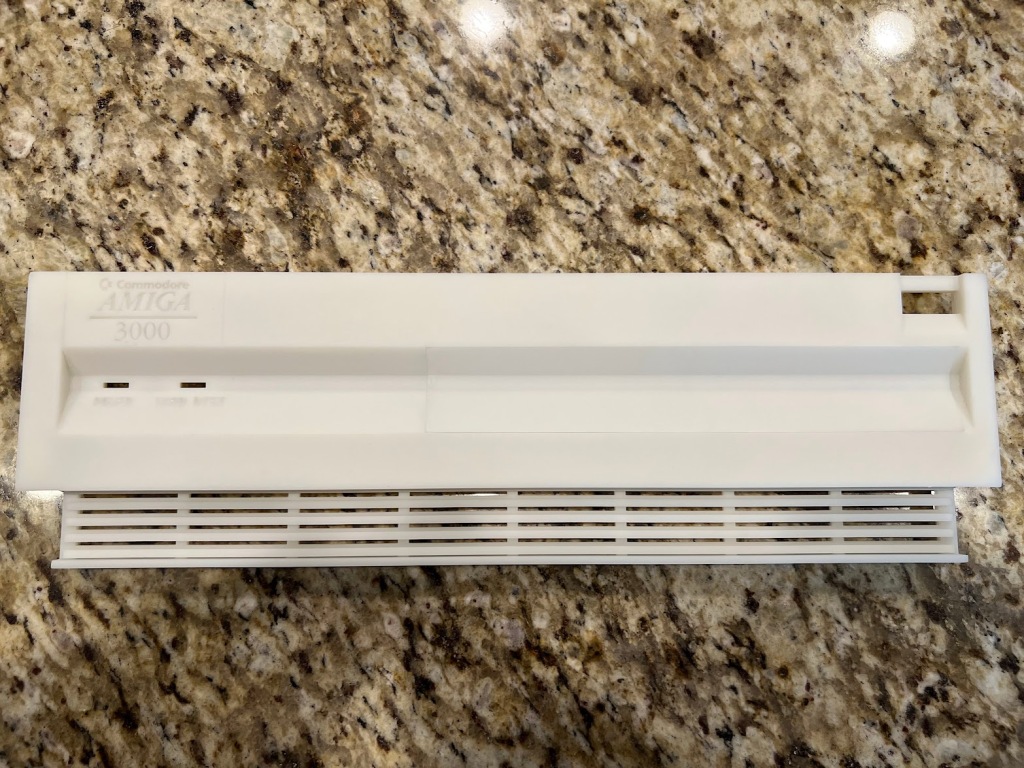
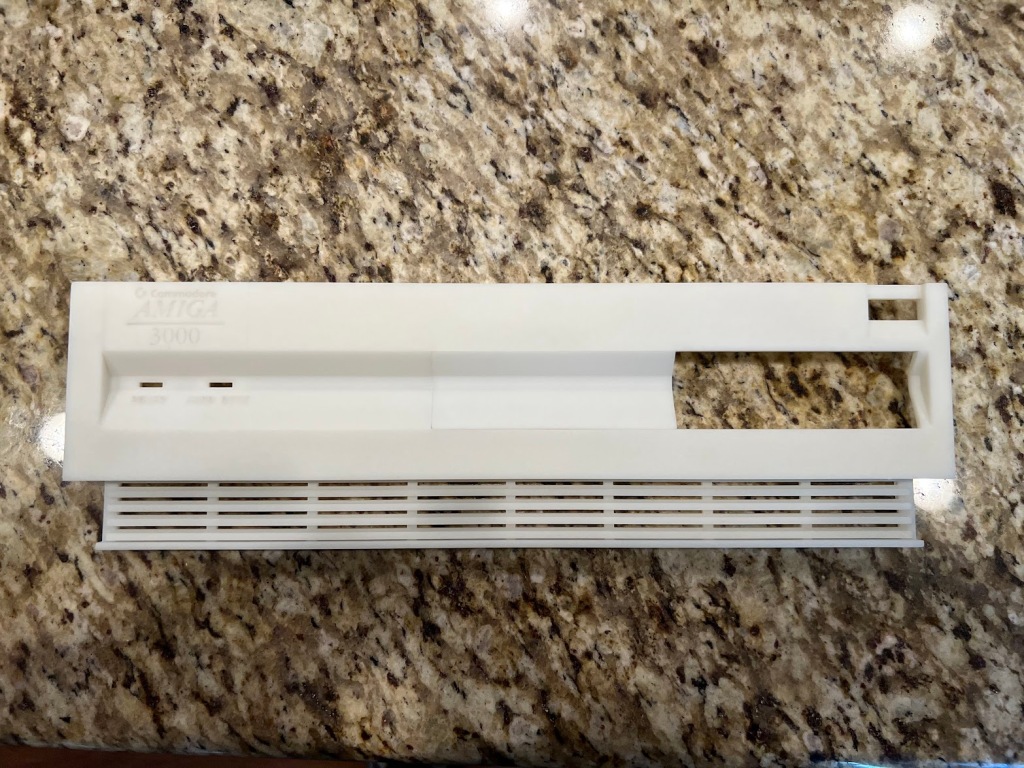



I’ve been working on my personal 4000 for some time and sadly had to sell it off to cover some unexpected bills shortly after finished it. It’s with a new owner that loves it as much as I did making it.
So what do I do now? Well I’m making myself a new one. I’ve nearly got the new board completed and just need to solder a few more parts. The one missing thing was a case. I had most of one but it’s missing the front face and other plastic parts. What’s a guy to do? Well, if you know me you know I don’t give up easily. I had access to a large format commercial resin 3D printer. Below are the results from having the replacement parts professionally printed. I can’t wait to show all of you the completed project when I’m done now. Stay tuned!
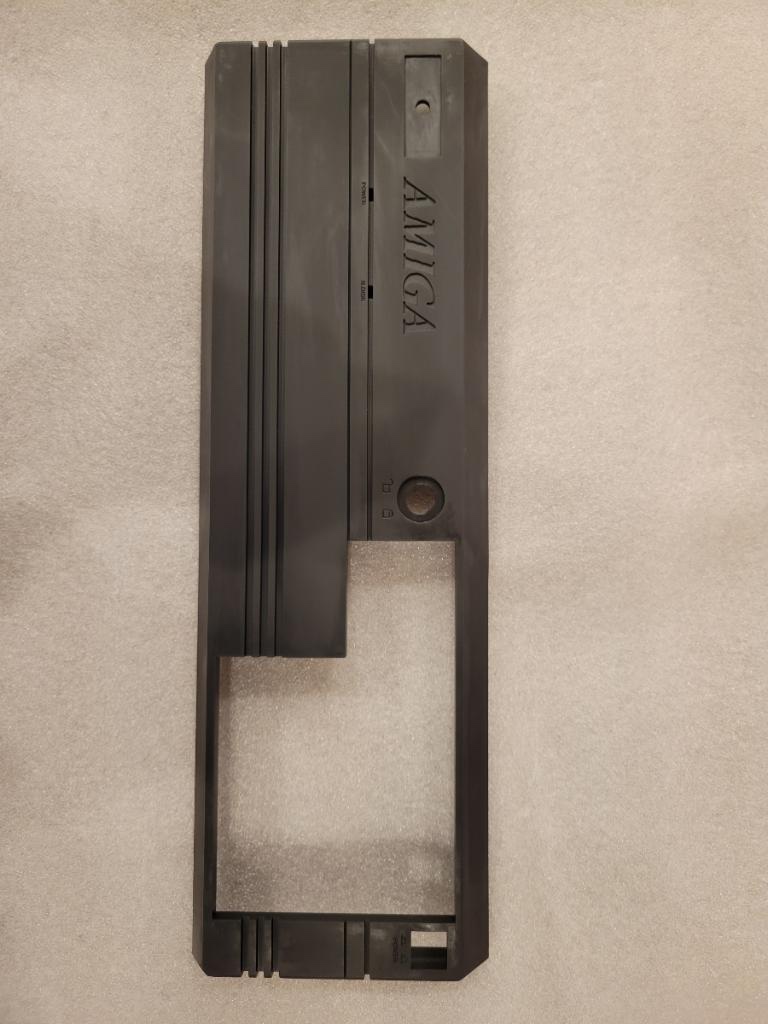


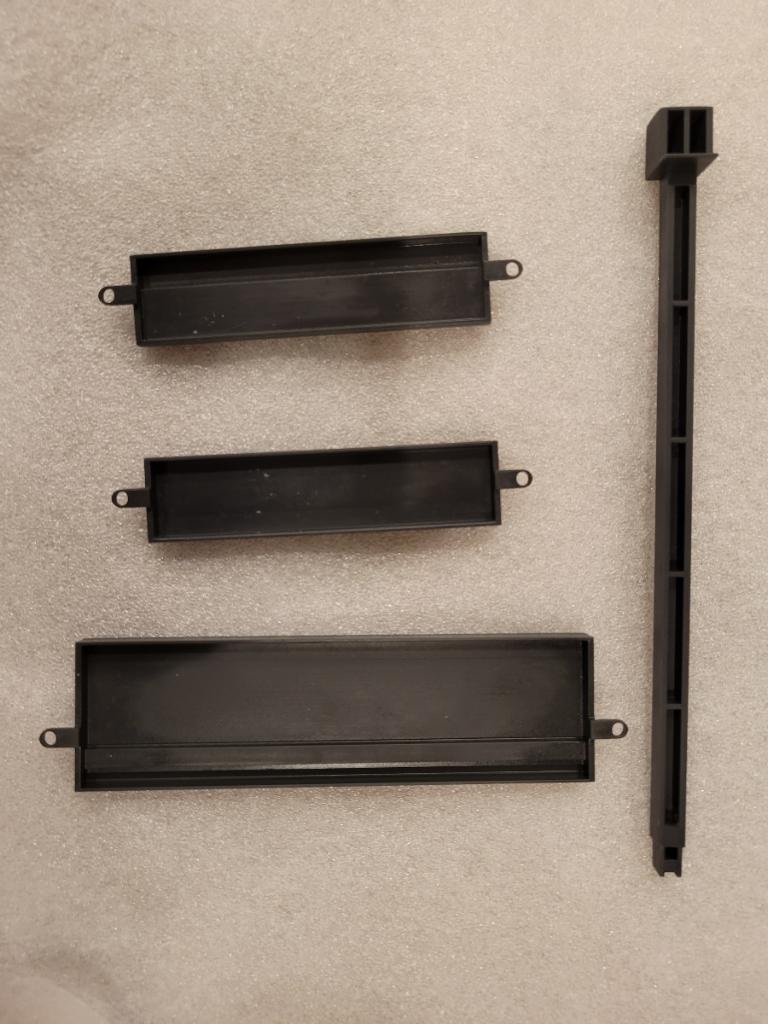

https://www.twitch.tv/videos/1722304768?tt_medium=mobile_web_share&tt_content=vod
It’s not ever easy saying goodbye to a fellow member in our community and especially one like Taylor. Please take the time to celebrate and remember him through this great replay Amiga Bill did on Twitch. Taylor was part of the Pintz & Amiga show and will be greatly missed.


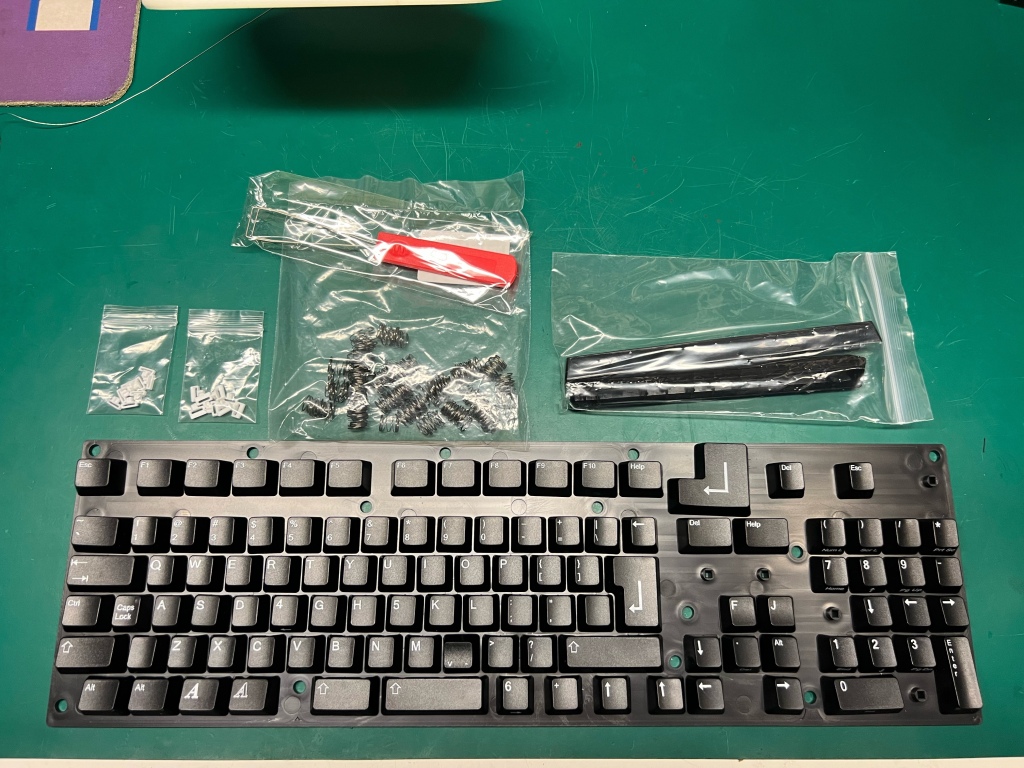

It’s been a long wait but the first of the two sets of key caps I ordered many years ago from the kickstarter campaign have arrived. As reported other places I can confirm my set of US layout keys is missing the period. I’m told a replacement key will be sent out eventually, but no timeline on that has been announced. They otherwise look pretty great and I’m pleased with them.

Another major new release of the gold standard in Amiga emulation is now available for download. Go grab it from here: https://www.winuae.net/
Major update
New hardware emulation features and update
New other features and updates
4.9.x bugs fixed
Older bugs fixed
Debugging related updates and fixes
Detailed change log in winuaechangelog.txt